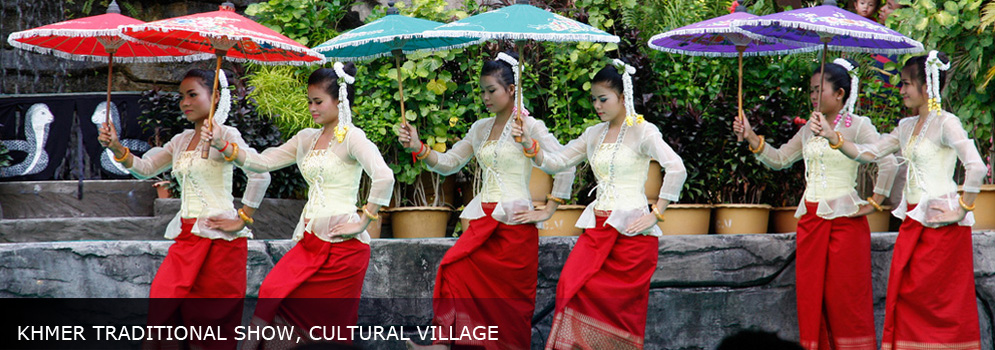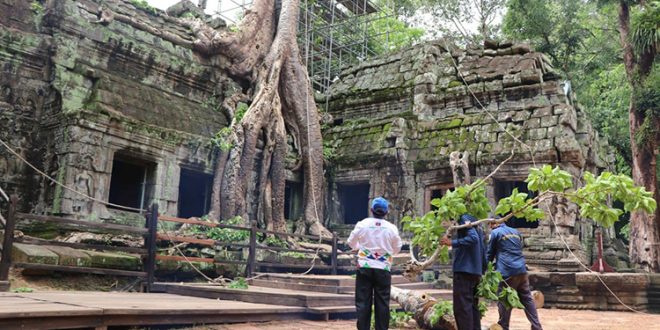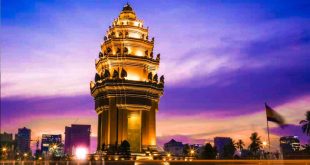Kong Sovannarith, Technical Officer of the Department of Water, Forestry and Infrastructure Management (DWFIM) at ANA, said people must refrain from touching trees or peeling tree barks because doing so increases the likelihood of the trees being infected.

“In Angkor Park, visitors enjoy taking pictures with the large root of the enormous tree next to the temple. Sometimes people scratch the tree bark, write or draw something on the tree. This can hurt the trees,” he said.
According to Sovannarith, a gigantic, Spung tree (tetramele nudiflora) in the eastern corner of Ta Prohm has been infected and its decaying root may damage the nearby temple if it were to fall.
“My team is pruning and treating the huge tree. It needs special care.
“The tree’s trunk and roots are located near the temple, so if attentive care is not provided, it could die prematurely and cause damage to the temple if it falls,” he said.
Sovannarith said the tree is popular with tourists who would pose for photographs with it.
The forest in the Angkor area, he said also acts as a barrier protecting the temple from strong wind and providing shade.
Dy Na, a DWFIM expert, said the decayed parts of the tree had been cut away and the stumps treated with resin mixed with cow dung and soil.
“We have been able to stop further degradation and we are now monitoring the tree’s health,” he said.
He pointed out that groundwater has a significant impact on the temple foundations in the Angkor area.
“Areas with a lot of trees are often areas with greater groundwater.
“That is why conserving temples in the Angkor area also requires maintaining the trees.
“Trees play an important role in Angkor Park because they attract rainwater, hold onto it, and help best groundwater permeability compared to open field areas. Temples need a good groundwater system,” he added.






